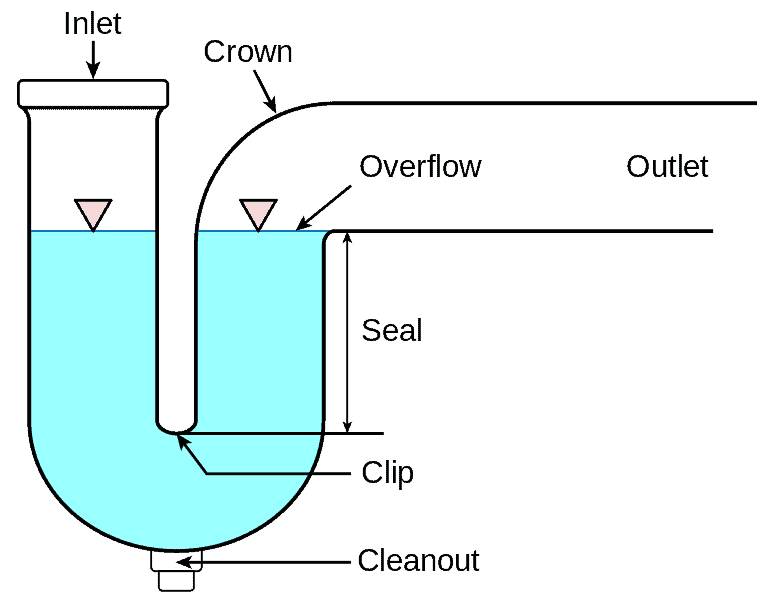![]() It was about this time last summer that we had one of those memorable service calls, the kind that really stick in your mind (or in this case, your scent memory). We had a client in Dixon who’d been using us for years to service her AC. We were there to do a filter change, just routine stuff, when she asked our technician off the cuff, “Hey, you guys do plumbing too, right?” Our guy was enthusiastic because we do, in fact, do plumbing. “Can I pay you extra to take a look at the laundry room sink in my basement?” The technician explained that we weren’t about to charge her to take a look at anything, but he’d be happy to check it out. She led the way to the laundry room, opened the door, and then things got very memorable.
It was about this time last summer that we had one of those memorable service calls, the kind that really stick in your mind (or in this case, your scent memory). We had a client in Dixon who’d been using us for years to service her AC. We were there to do a filter change, just routine stuff, when she asked our technician off the cuff, “Hey, you guys do plumbing too, right?” Our guy was enthusiastic because we do, in fact, do plumbing. “Can I pay you extra to take a look at the laundry room sink in my basement?” The technician explained that we weren’t about to charge her to take a look at anything, but he’d be happy to check it out. She led the way to the laundry room, opened the door, and then things got very memorable.
“It smelled like I’d stuck my nose up the tailpipe on a ‘79 Ford!” the guy told me later. The entire room was filled with the noxious smells of car exhaust, or something that smelled very close to it. It was overpowering — amazed, the technician asked how long it had been this way.
“Oh, a few months,” was the response. “I never use that sink, and we have another washer and dryer in the garage.” Our guy couldn’t blame them for not using the laundry room because the smell was unbelievable. But he was curious about the smell — in our experience, when something smells that bad, it’s a sign of very bad things. So he finished the filter change, rolled up his sleeves (and plugged his nose), and got to work.
Diagnosing Sewer Smells
Bad smells of exhaust or methane from your plumbing are almost always from sewer gas entering your home via sinks, toilets, or other plumbing. Sewer gas can smell like various things including exhaust, bad eggs, or noxious biological fumes, and it’s usually composed of all kinds of nasty stuff. The content of the gas can vary from day to day — some of it just smells, and some of it can kill you. So when you smell something bad in your home, it’s important to quickly find the source and fix it.

Check the P-Trap
Our technician knew the smell was due to sewer gas from the sink or somewhere close to it. This usually happens when the p-trap goes dry: this water trap is designed to stop gas from coming up the drain, but if it goes dry (for example, if the sink isn’t used for a while), gas can pass through the U-bend of the p-trap and fill the room with a bad odor. Our tech had recently seen this in a guest bathroom sink that hadn’t been used in over a year, and the smell was very similar. Solving this a pretty simple fix: pour a pitcher of water down the drain and do this regularly, particularly if you do not use that sink or toilet often, or if the smell comes back.
But in this case, the p-trap was already full of water so our technician knew that wasn’t the problem. Just to be safe, he refilled it, reinstalled the whole thing, and waited to see if the smell would go away. When it didn’t, he rolled up his sleeves even further, called the office to let them know he’d be a while, and got out his plumbing camera.
Check the Pipes
If the problem isn’t the p-trap, that means it’s an issue deeper in the plumbing. To find that, our technician used a plumbing camera. A plumbing camera is very similar to the type of camera that a doctor uses to examine patients (think colonoscopy), but instead of looking at internal organs, we use ours to check for breaks or blockages deep inside a home’s plumbing where the naked eye can’t see. The long camera and attached flashlight snake down drains and pipes, sending an image back to a screen held by the technician. That’s what our guy was using when he discovered the problem: cast iron pipes.
In the old days, drain lines were often made of cast iron. This is a pretty bad material for the job because it corrodes quickly, but it was cheaper at the time than copper, and PVC-type plastic hadn’t been standardized yet. Everybody knows that iron rusts, and that’s what happens in homes with old pipes: the pipes rust and leak or they release gas, as in this case. Our clients’ home was built very early in Dixon’s history, so it wasn’t a surprise that if any house in town had cast iron plumbing, it would be hers. It would have to be replaced.
Fixing the Smell
Although he’d found the problem, it still wasn’t great news for our homeowner. There was no way to completely fix the issue without replacing all the cast iron in this section of plumbing, and there was no way he could do all that in one day. But he also wasn’t about to let this woman suffer another day with that smell.
The plumbing may have been extensive, but the hole in the drain pipe was luckily a manageable size. And it wasn’t that far below where the p-trap connected to the drain, about eight inches from the floor. The guy made a few calls, consulted the homeowner, and cut away the wall that was between him and the pipe. He patched the hole with a compound and a clamp, and the smell began to dissipate almost immediately. After a few hours, the room didn’t smell at all.
In the end, the technician was just happy the homeowner had asked him to look. After this, we worked with her to find a long-term solution for replacing her pipes, but if our technician hadn’t been there to act quickly, tragedy could have been the result. Keep this in mind the next time we’re at your home or something funny starts happening, and ask us any plumbing questions that may have been itching in the back of your mind. As the “No Surprise Guys,” we guarantee we won’t leave you in any dangerous situations, even if it wasn’t part of the original job.

